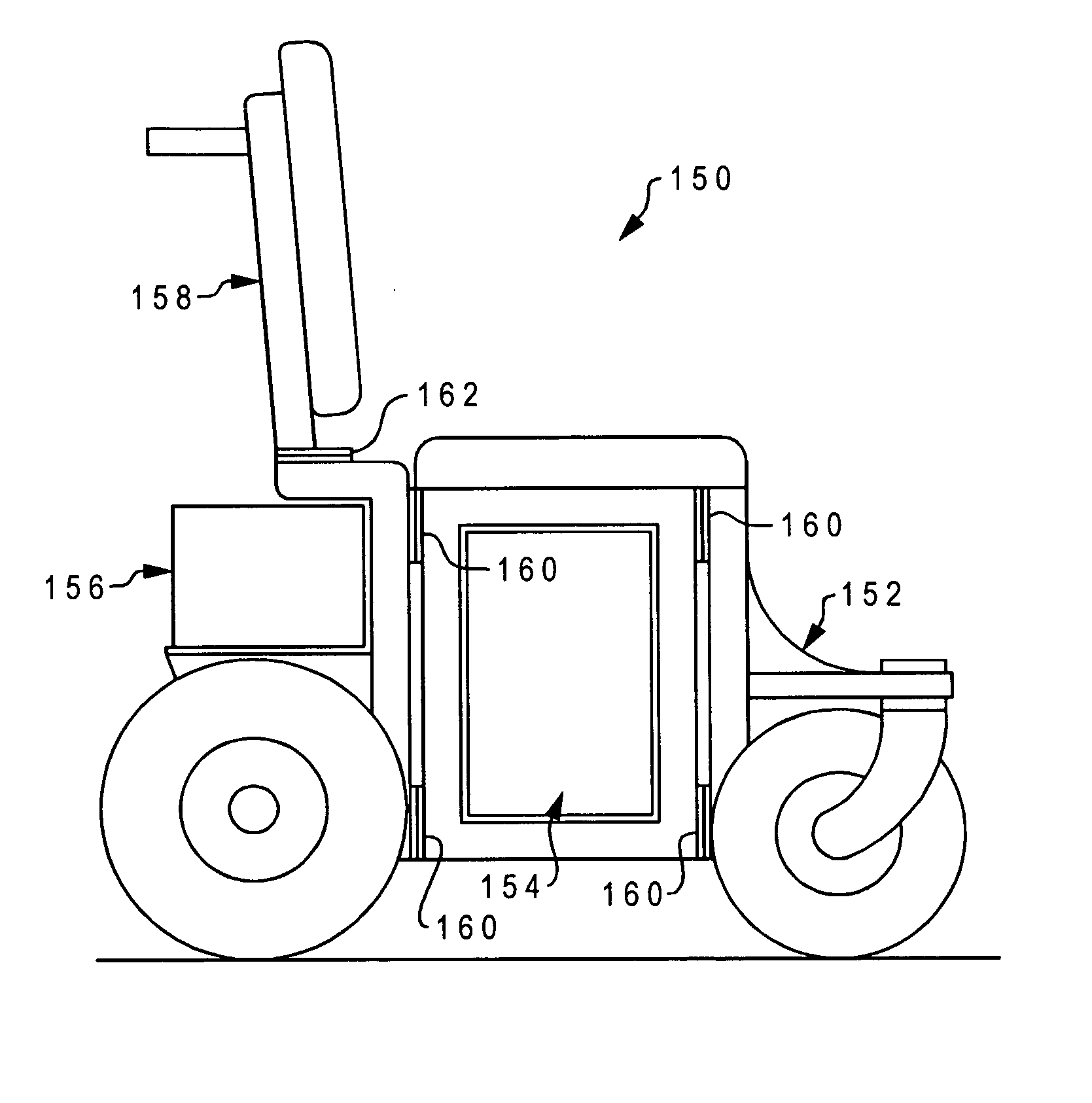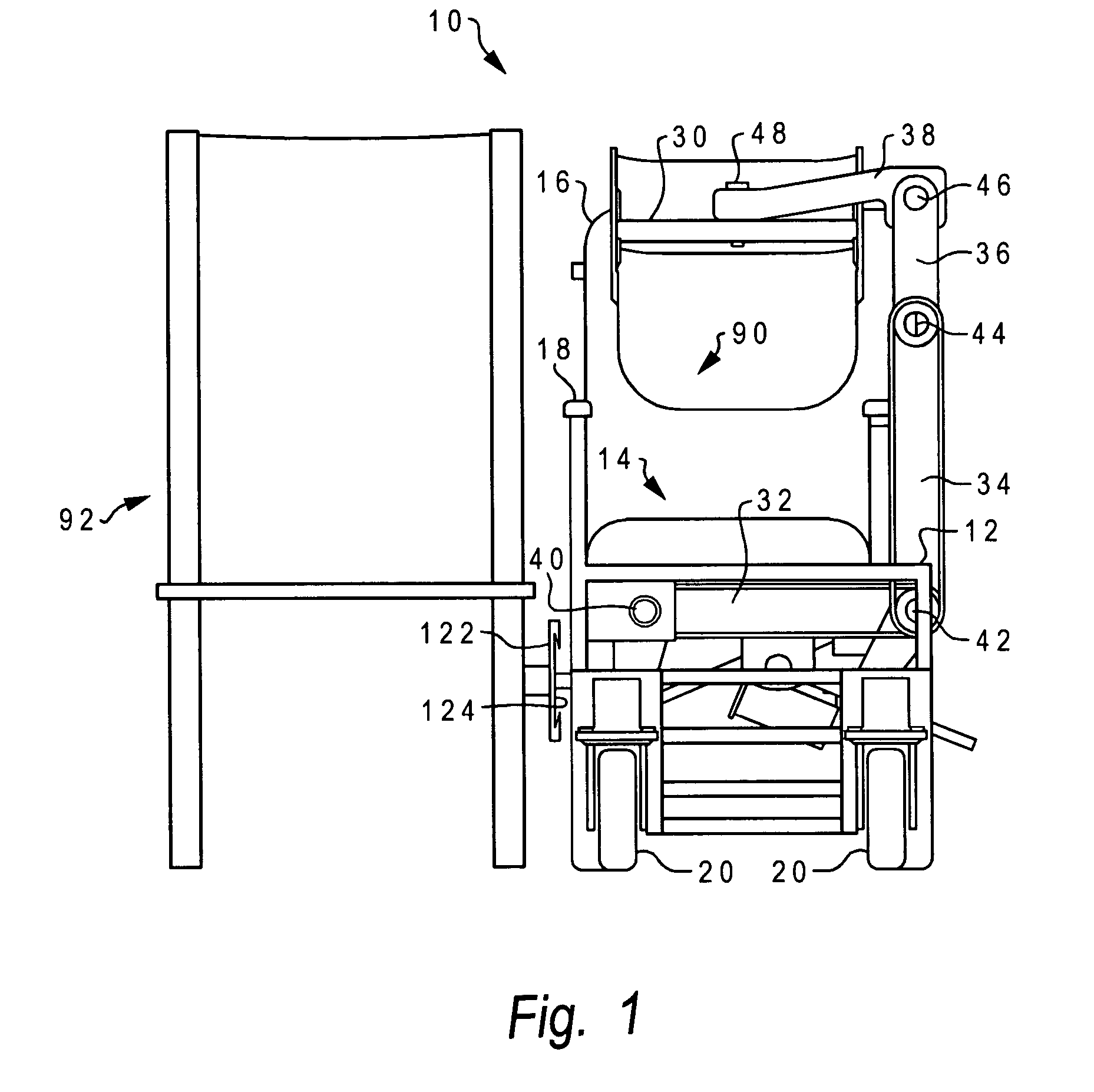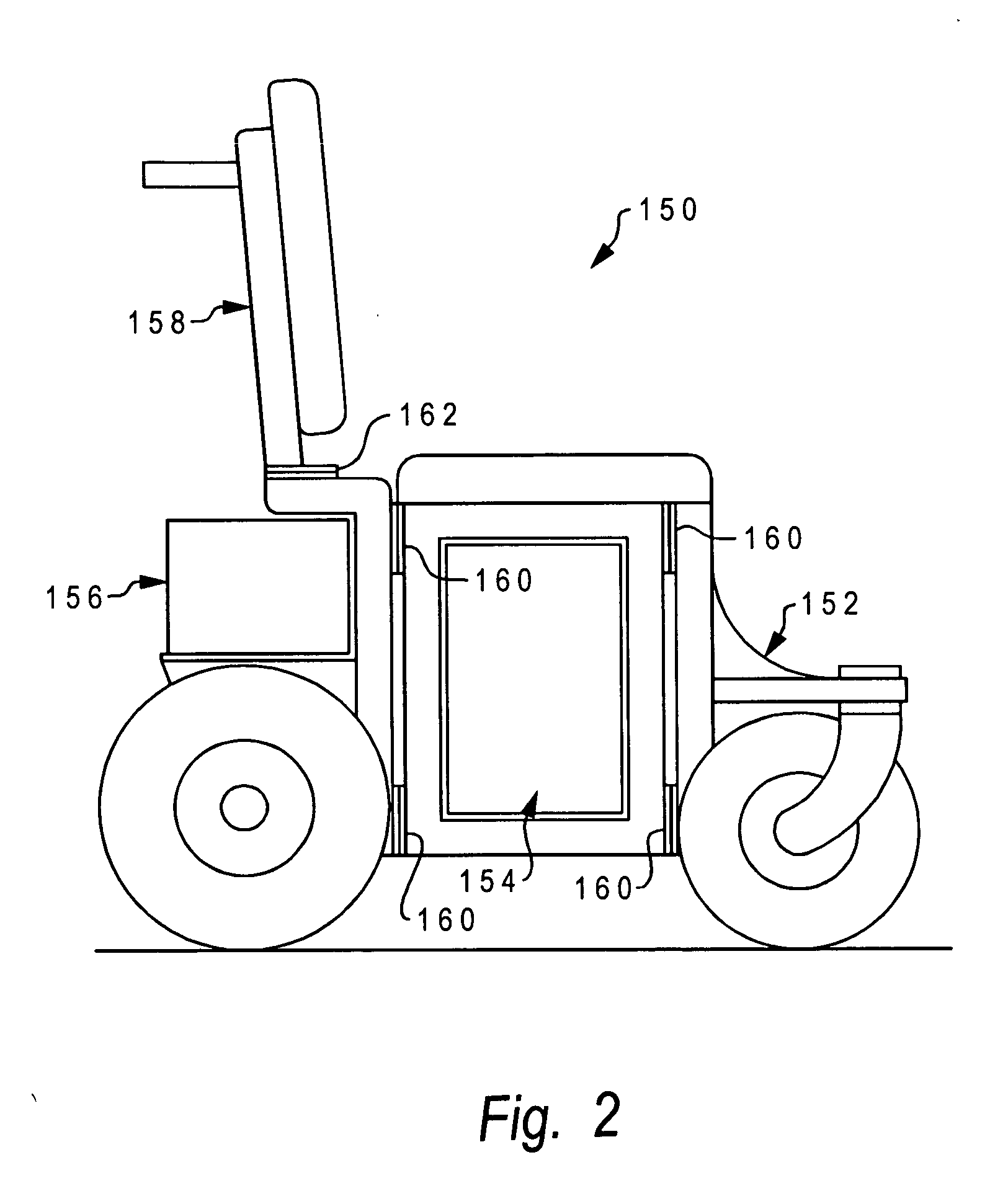While about half of these people are able to stand on their own, the remaining half are unable to support their weight on their legs.
Handicapped people who are unable to stand or otherwise lift their weight with their arms face many difficulties in their daily lives.
One of the most serious of these is that they must be frequently lifted and transferred between their wheelchairs and their beds, regular chairs, dining facilities, bathroom fixtures, cars, etc.
Occasionally, commercially available lifting aids are employed to assist with
patient lifting, but because of limitations and ease of use issues, most
patient lifting and transfers are done manually.
Whenever disabled individuals are lifted or moved, there is a possibility for injuring that person.
These injuries usually result when the patient is bumped into objects while being lifted and transferred, or from being dropped.
When caregivers manually lift and transfer patients, they can seriously injure their backs.
Often the patient being lifted is significantly heavier than the
care giver, and cannot assist the
care giver during the move.
Some patients also move erratically while being moved, and may slip out of the care givers grasp, or force the
care giver to quickly readjust their lifting position.
If they are unable to perform these functions due to lifting injuries to the back, they may be required to work in other capacities in the health care
system, or to find other jobs.
The loss of skilled experienced nurses and care givers in
nursing homes, hospitals, and hospice institutions reduces the overall quality of healthcare delivered.
The reporting process and subsequent review sessions, although worthwhile, result in significant additional effort and cost on the part of the
nursing institution.
In home care settings, a significant portion of the cost of caring for a seriously handicapped individual is the cost of care givers who are required to safely lift and move the patient.
Another problem confronted by people with serious physical disabilities is the occurrence of pressure or
bed sores when the patient is allowed to remain in one position for extended periods of time.
It is often difficult for challenged people to make the transition from being totally independent, to being highly or totally dependent on caregivers for the most basic functions.
The combination of these two factors can lead to the onset of serious depression in the individual, and thus reduce the rate of their
recovery.
However, these devices and systems have serious short comings, and do not address the total need associated with safely lifting, transferring, and transporting handicapped individuals within their
daily living and healthcare environments.
Although it would be possible to move the patient hoist between lifting locations, these types of lifting devices are awkward to move, and are designed primarily for use in one location.
The devices are relative large, and take a considerable amount of floor space.
However this can be demoralizing and degrading for patients to be dangling from the end of a chain in a sling while being moved in public places, and this form of
patient transport is normally not done.
Another significant
disadvantage of hoist devices is that the lift starting position, patient's trajectory or path during the move, uniformity of motion, and end landing position are all controlled manually by the care giver.
One final
disadvantage of lifting hoists is that they are not designed so the user cannot operate the hoist themselves.
Thus, handicapped individuals who are seeking greater independence from caregivers still will require another person to operate the lifting hoist style
patient transfer device.
Another
patient lift and
transfer system is available for use in homes and institutional settings, referred to as an overhead hoist / trolley
system, which also has significant limitations and drawbacks.
It is clearly not possible to transfer a patient in any indoor or outdoor location where the overhead lifting track is not in place.
Accordingly, the overhead track
system could not be used for transferring a patient from his
wheelchair into a car for example.
Another limitation of the track
patient lift system relates to installation of the system in a home or institution.
They do not however enable a patient to be lifted and transferred between wheelchairs, furniture, cars, and the like.
Another problem with
mobility devices that are available today is that there is no single device that can provide all the major mobility functions required by handicapped persons.
Lifts can lift and transfer a person to and from his wheel chair, but cannot transport him within his
residence.
There is a further problem with the "handedness" of some mobility systems, i.e., they are constructed with an asymmetrical design which allows elevating or transferring to only one side of the
wheelchair.
Such a construction may present difficulties when the user is in a setting which requires elevation or transfer to the left side.
Current mobility systems are not versatile enough to allow deployment on either side.
Unfortunately, current transfer chairs do not allow for either factory or field conversion from right-hand lifting capability to left-hand.
The handedness of a transfer chair can additionally create problems with regard to the manufacturability of the chair.
Although separate parts can be provided, it increases the amount of
engineering required for design of the chair, and also increases the amount of inventory of separate types of parts that the manufacturer must maintain in stock to provide both right- and left-hand chairs against orders.
A final problem with
mobility devices that exist today is that they cannot be upgraded to meet the mobility needs of their users as these needs change.
Powered wheelchairs for example cannot be modified or upgraded to provide lift and transfer capability as the user becomes less able to move himself.
Usually it is necessary for the handicapped person to purchase additional separate pieces of equipment, and / or to rely more heavily on caregivers which substantially increases the cost of care.
 Login to View More
Login to View More  Login to View More
Login to View More 


